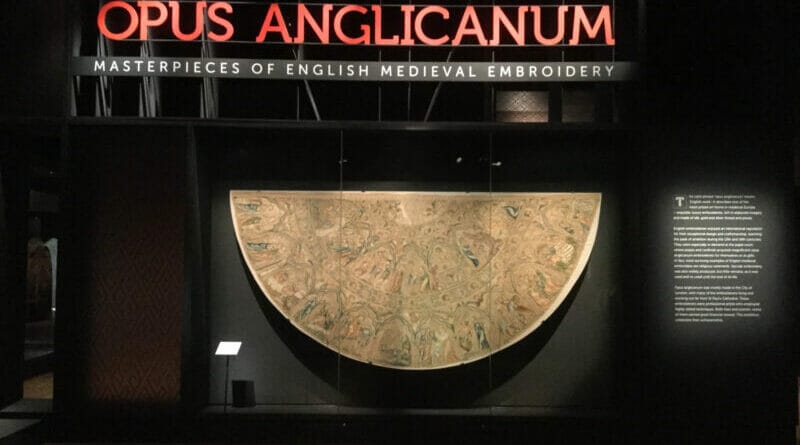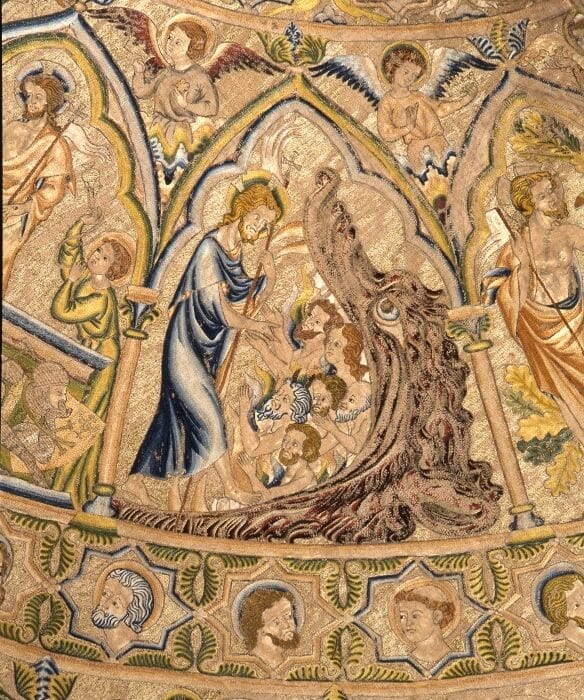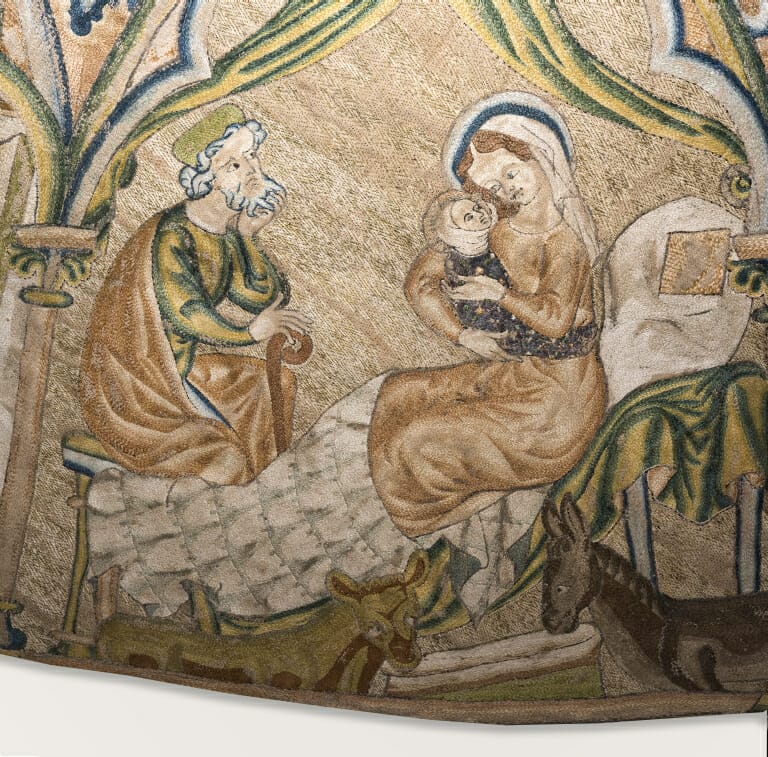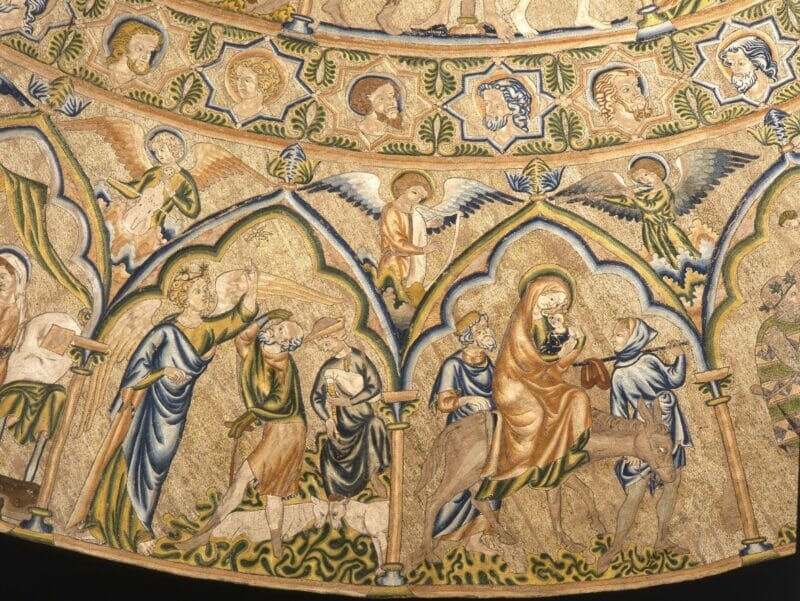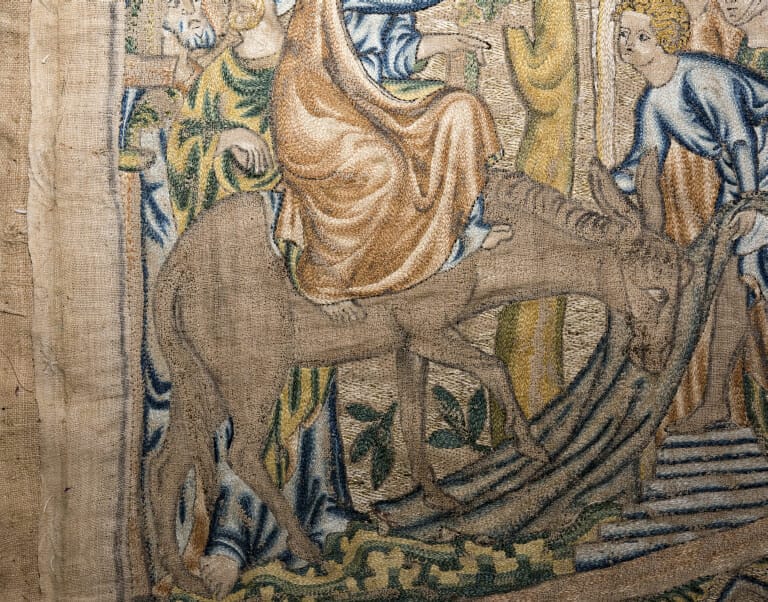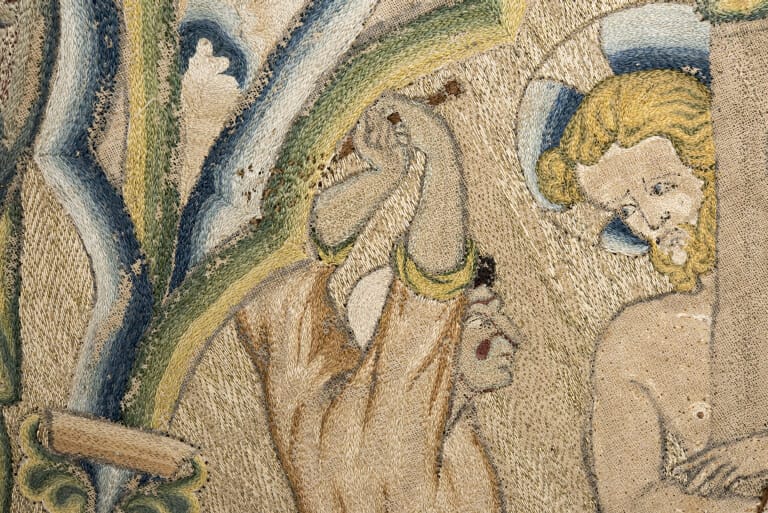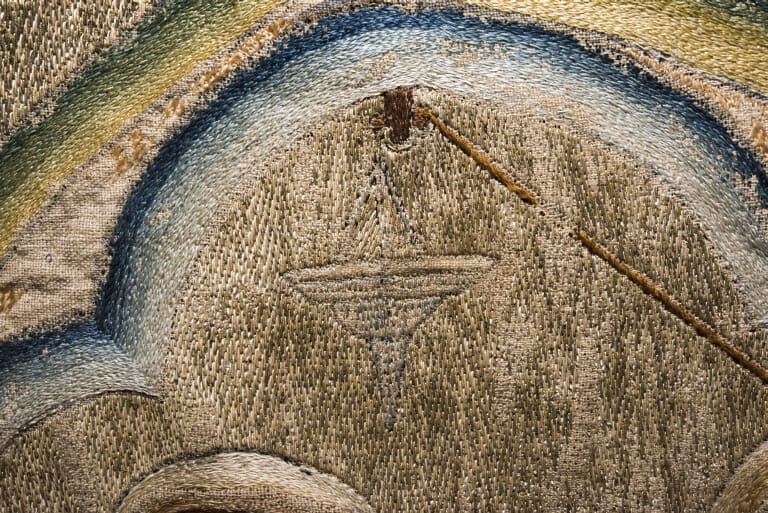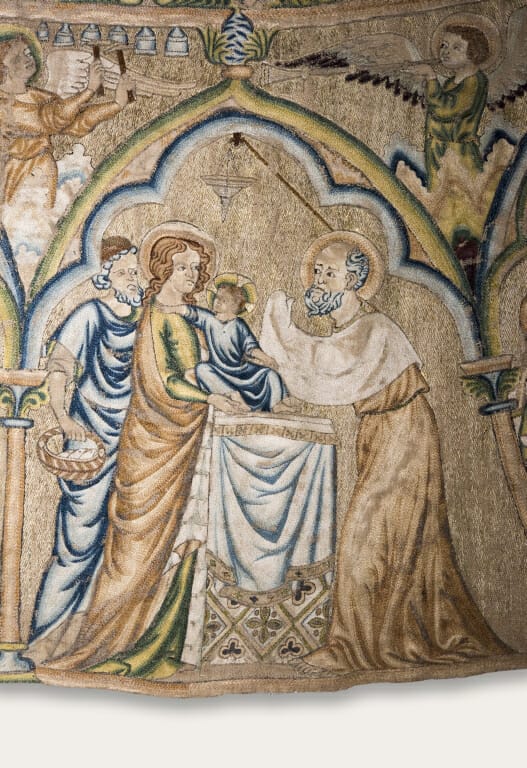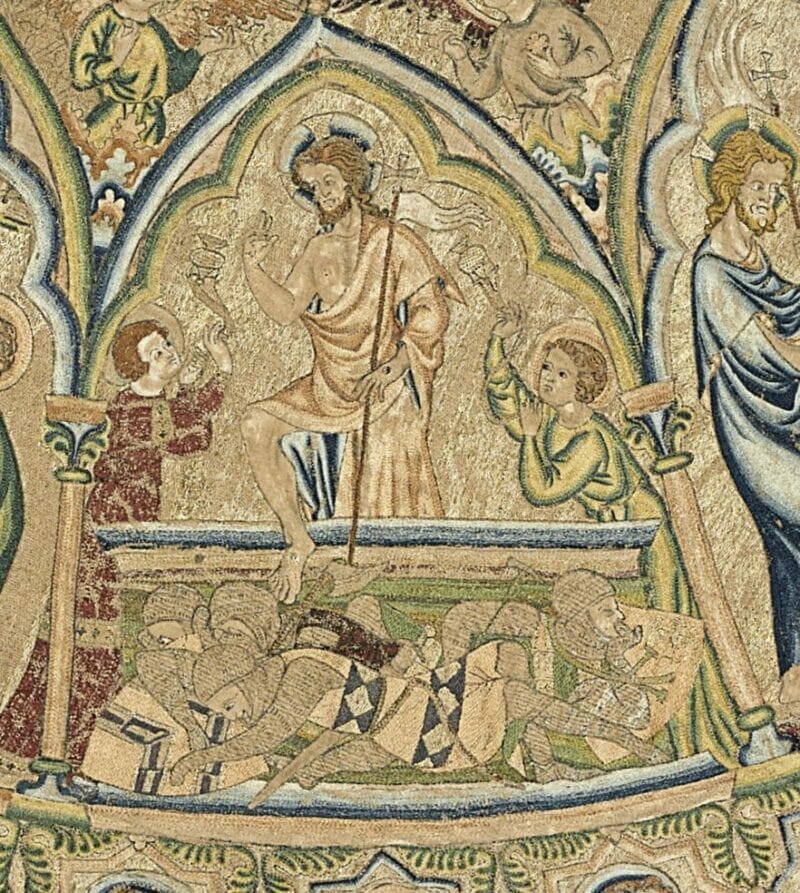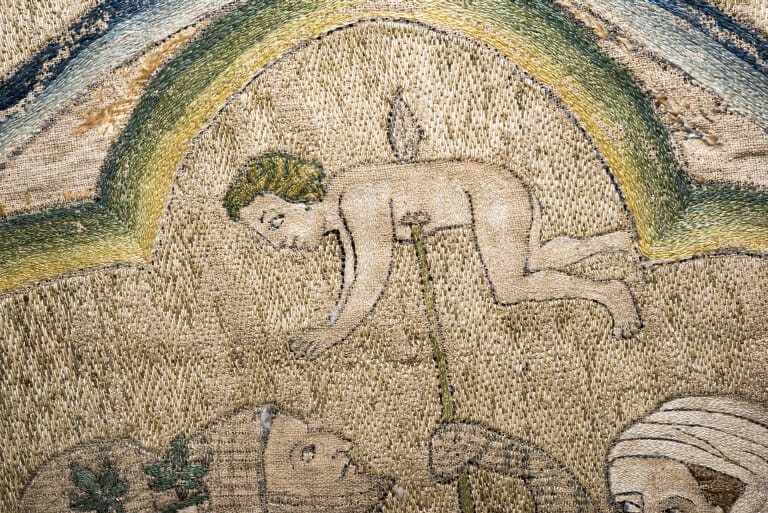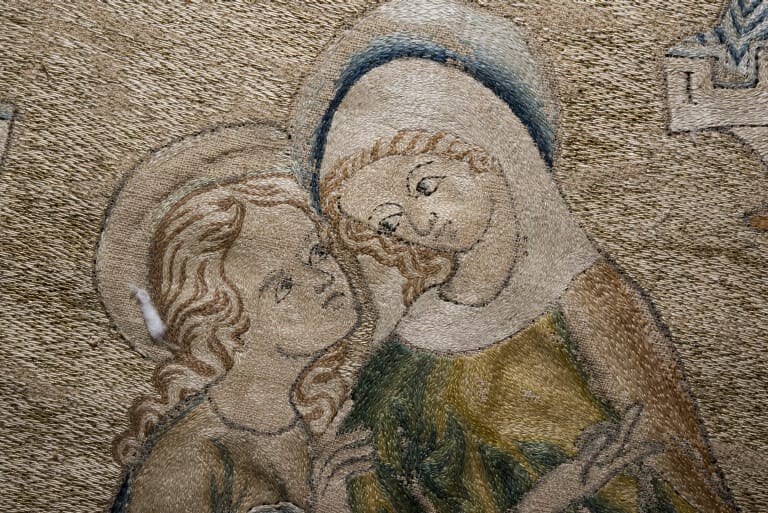The Bologna Cope: Patronage, Iconography, History, and Conservation
Curated by Micheal A. Micheal
Brepols, 2022
Presentation of the volume
Thursday, March 16, 2023 5:00 p.m.
Museo Civico Medievale | Sala del Lapidario
Entrance from via di Porta Castello 3, Bologna
Civic Museums Sector Bologna | Civic Museums of Ancient Art
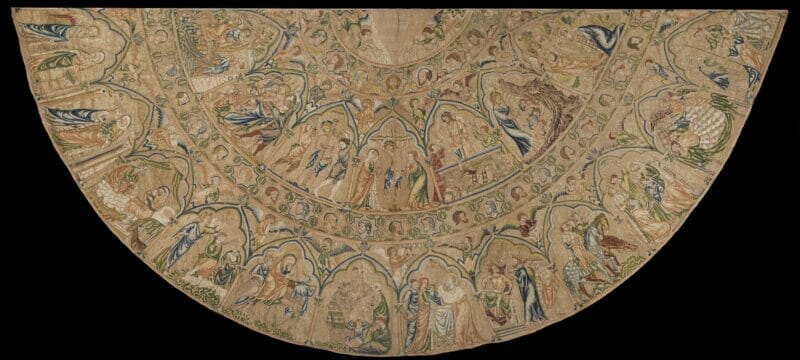
One of the most precious art treasures in the Museo Civico Medievale in Bologna is the splendid cope of English manufacture dating from the late 13th – early 14th century, one of the absolute masterpieces of what is known as opus anglicanum, i.e. a special, highly refined technique applied to rich, complex embroidery that became very popular from the 13th century onwards and spread from England throughout Europe.
Often this technique, called “needle painting,” was used to make fine textile products commissioned as gifts of a diplomatic nature or important sacred vestments destined for high prelates and pontiffs, as was also the case with the precious Bologna cope, made of polychrome silk on linen cloth. It is in fact a large liturgical surcoat from the church of San Domenico in Bologna, which was worn during pontifical masses and other solemn ceremonies, as attested by the fine decoration executed with colored silk threads and thread covered with thin gold and silver foils.
The biography and the cultural context in which this extraordinarily valuable object was created is reconstructed in detail in the English-language volume The Bologna Cope: Patronage, Iconography, History, and Conservation, edited by Michael A. Michael (head of the “Opus Anglicanum” project at the University of Glasgow) and published in 2022 by the Belgian publishing house Brepols as the second title in the series “Studies in English Medieval Embroidery”.
The prestigious international publication, resulting from long and meticulous research and from the conservative restoration of the artefact carried out in recent years, will be presented on Thursday 16 March 2023 at 5.00 p.m. in the Sala del Lapidario of the Museo Civico Medievale (entrance from Via di Porta Castello 3, Bologna). In addition to the curator Michael A. Michael, speakers will include Massimo Medica (director of Musei Civici d’Arte Antica | Settore Musei Civici Bologna), Giancarlo Benevolo (medieval historian, Musei Civici d’Arte Antica | Settore Musei Civici Bologna) and Manuela Farinelli (restorer). Admission is free, subject to availability.
The splendid processional cloak combines two moments in the evolution of embroidery that merge fully and elegantly: ancient geometries for the star-shaped frames that encircle the heads of the saints and a more mature style in the architecture. The rich decoration depicts the Stories of Christ and the Virgin and is divided in a double sequence, interspersed with two narrow semicircular crowns enclosing the heads of saints. The narrative is developed within ogival architectures, which mark the succession of episodes, among which the Resurrection scene stands out next to the Crucifixion. Due to their extraordinary inventive richness, the scenes offered quite a few compositional cues to 14th- and early 15th-century Bolognese artists.
The volume edited by Michael presents the first detailed investigation of the iconographic cycle depicted and documents the results of the most recent research conducted by the staff of the Musei Civici d’Arte Antica in Bologna and leading scholars in the field of textiles and the production of medieval liturgical vestments. New dating evidence proves that the vestment belonged to Pope Benedict XI, born Nicolò di Bocassio, a Dominican elected after the death of Boniface VIII, who offered it to the congregation of the church of Bologna during his brief pontificate (1303-1304). As is the case with other English copes, it is likely that this one too was given to the pope by the King of England, Edward I, as a way of thanking him for his services when he, before being elected Pope, and before that Cardinal, had been involved as Master General of the order on behalf of Boniface VIII in the arbitration between the English sovereign and the King of France, Phillip the Fair.
A comprehensive survey of archival materials related to the cope and its rediscovery in the 19th century is accompanied by a detailed historiography of the artefact’s literature and exhibition history, and an account of the challenges faced during a recent conservative restoration. The restoration, carried out by Manuela Farinelli, was undertaken on the occasion of the exhibition Opus Anglicanum: Masterpieces of English Medieval Embroidery at the V&A South Kensington (1 October 2016 – 5 February 2017), which exceptionally brought together a selection of over 100 masterpieces of English medieval embroidery from all over Europe alongside the permanent collection of the London museum, the world’s largest collection of textiles made with this technique.

The Bologna Cope: Patronage, Iconography, History, and Conservation.
Edited by: Michael A. Michael
Publisher: Brepols
Pages: 228
Illustrations: 160 col.
Dimensions: 225 x 300 mm
Language: english
Year of publication: 2022
Price: 125 euros
ISBN: 978-1-912554-87-4
Index:
Massimo Medica – Il dono di un re a un papa: Benedetto XI e la Cope di Bologna
Micheal A. Michael – Il contesto culturale della Cope di Bologna: La progettazione e la produzione dei paramenti liturgici dell’Opus An-glicanum in Inghilterra
Franco Faranda e Michael A. Michael – L’iconografia del Cope di San Domenico a Bologna
Giancarlo Benevolo – La Cope di San Domenico negli inventari della Sacrestia e del Convento dei Frati Predicatori di Bologna: secoli XIV-XIX
Silvia Battistini – Una storiografia della Cope di Bologna
Marta Cuoghi Costantini – Tessuti e ricami in Italia tra 1200 e 1300
Manuela Farinelli – La conservazione della Cope di Bologna
Silvia Battistini – La Cope di Bologna (Descrizione del catalogo)
The volume is available for purchase in the bookshop of the Museo Civico Medievale di Bologna.
